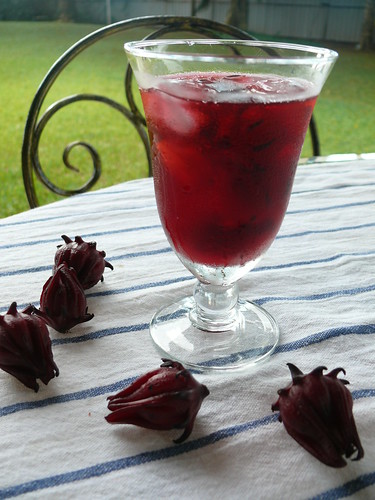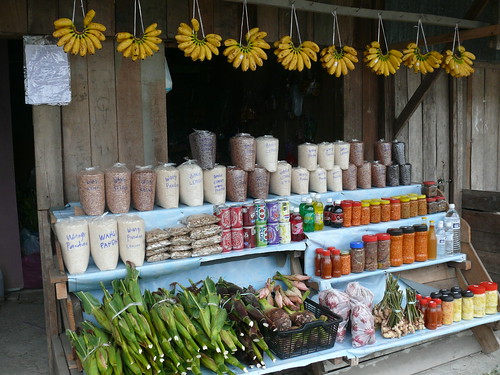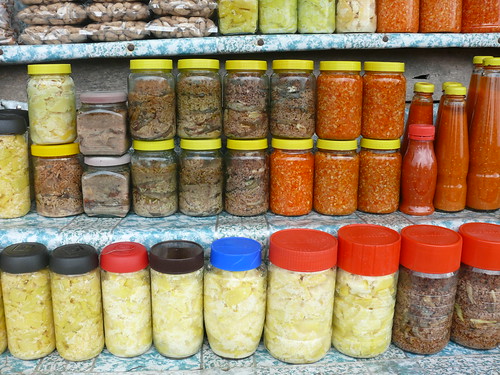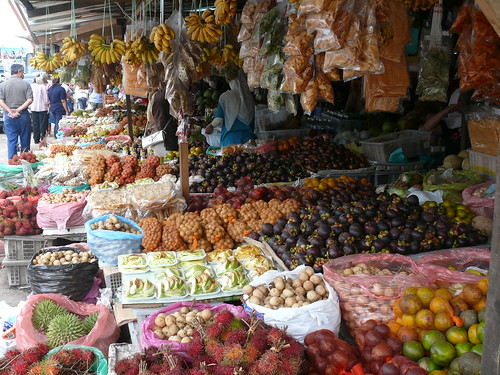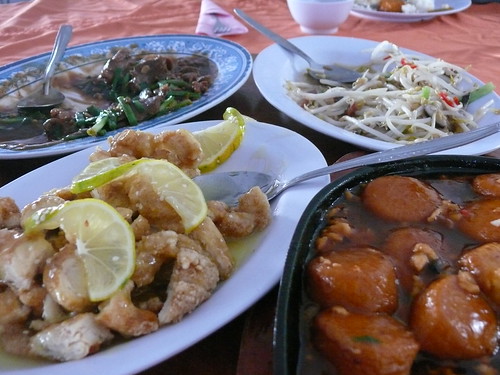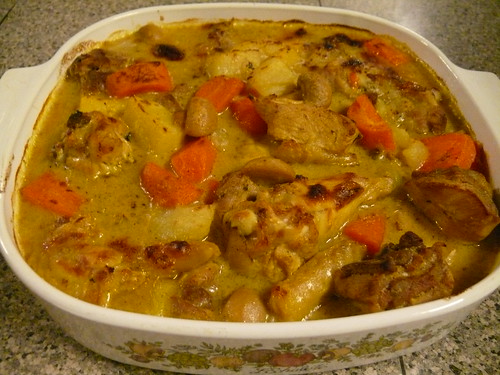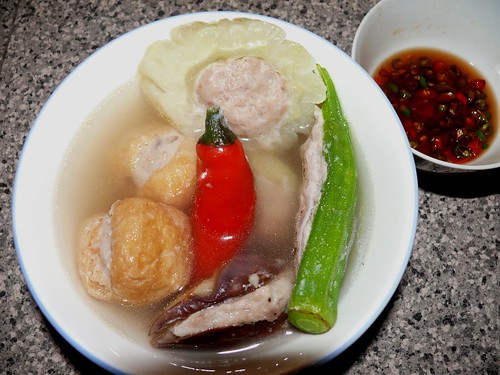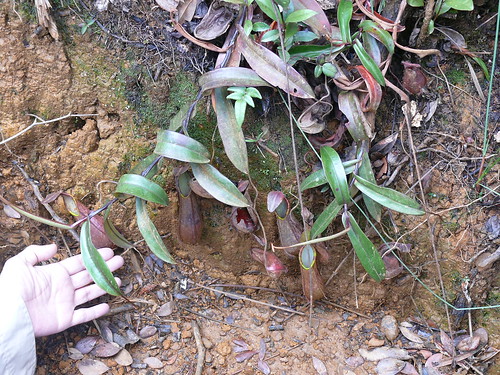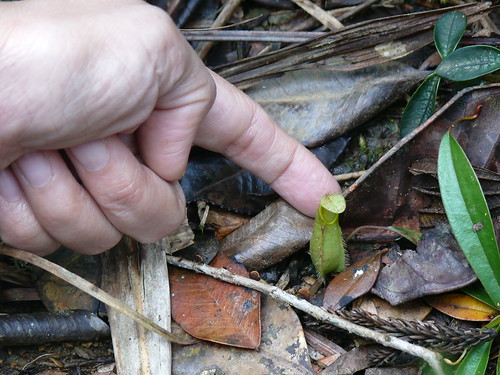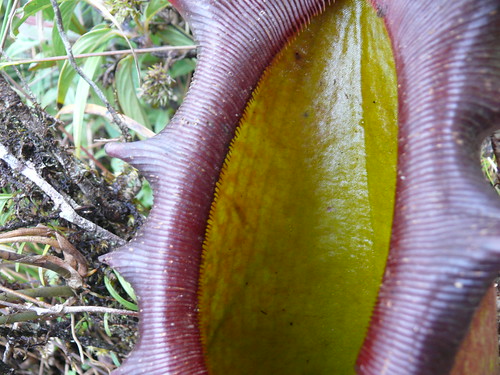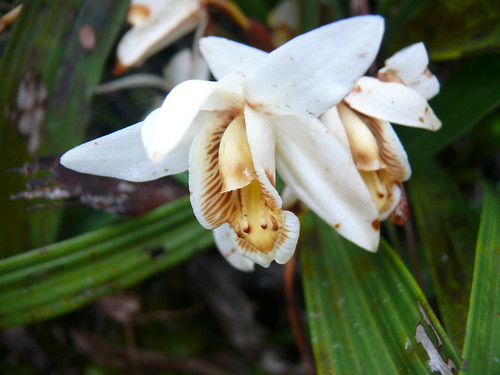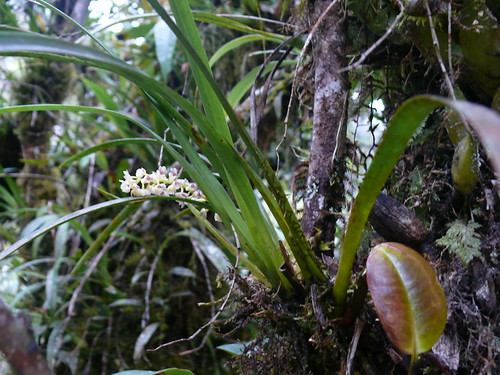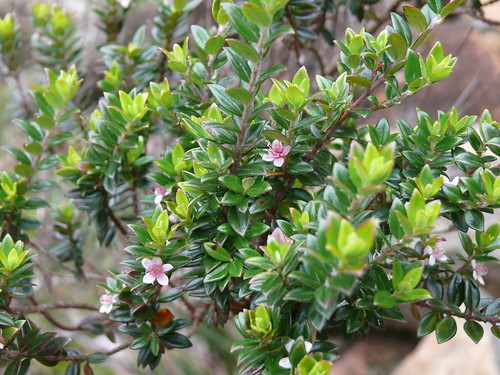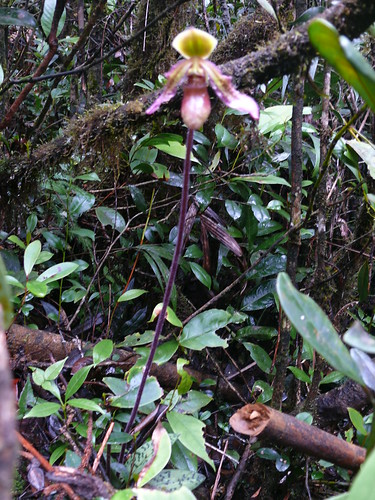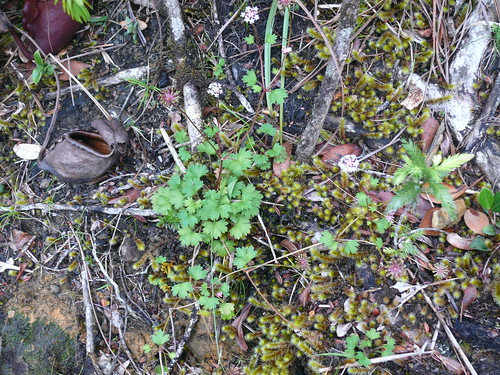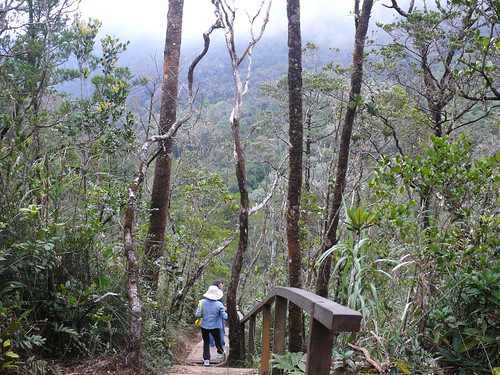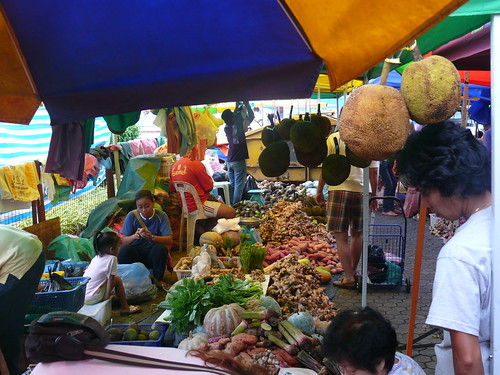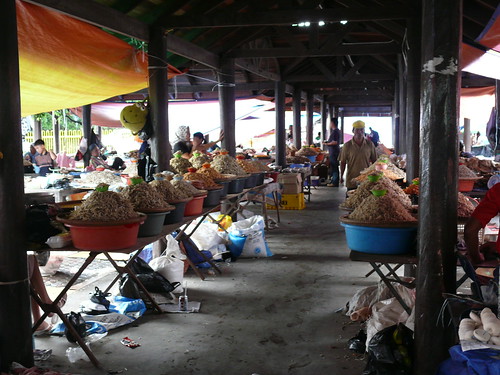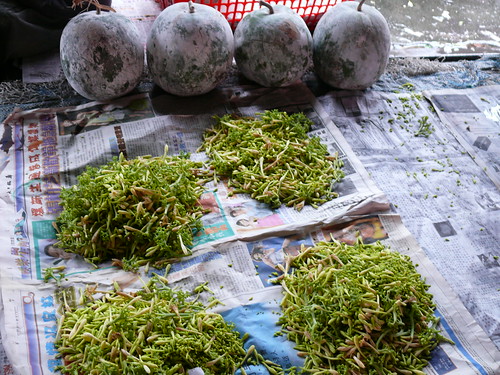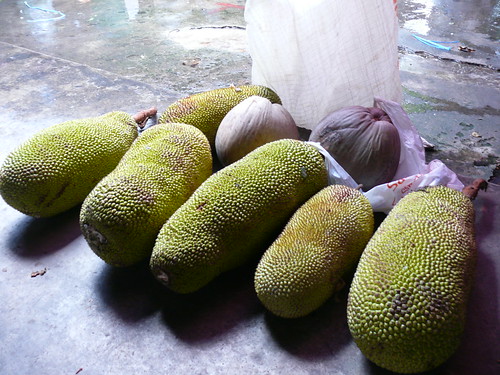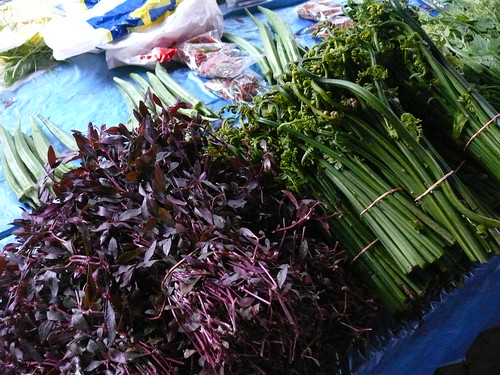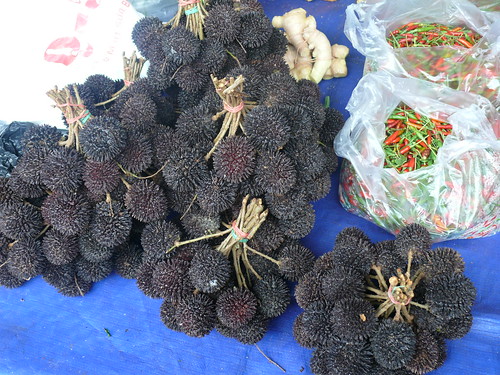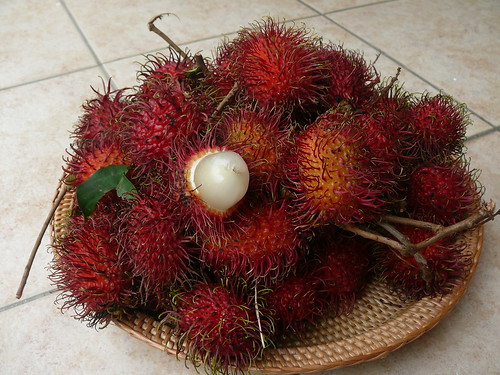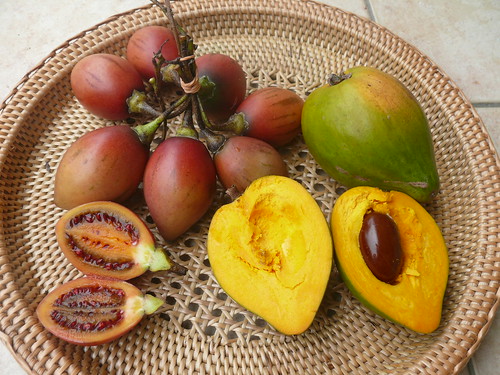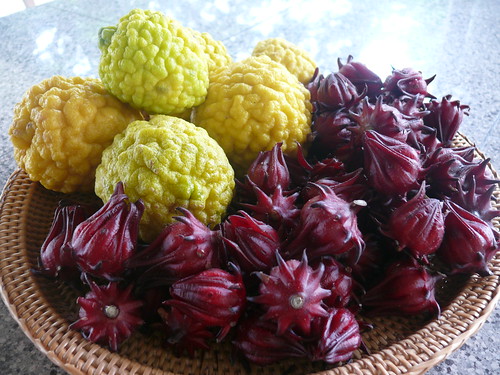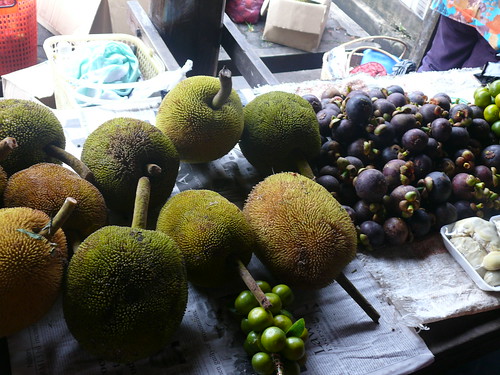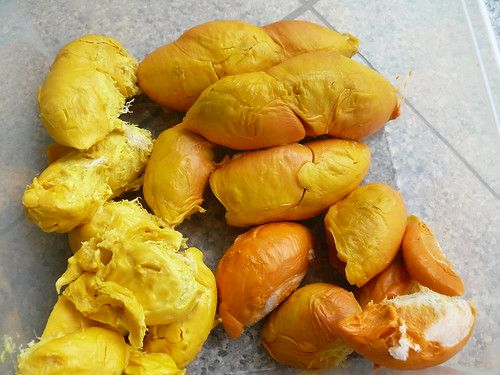I don't normally post on weekends, but because K, a friend who lives in Ohio, USA has sent an urgent request for a fried
mifen (rice vermicelli/noodles) recipe for a friend, I've cooked it for dinner tonight so I can post it by the time she gets up to read this. Also, I can't resist fried
mifen especially home-fried using little oil.
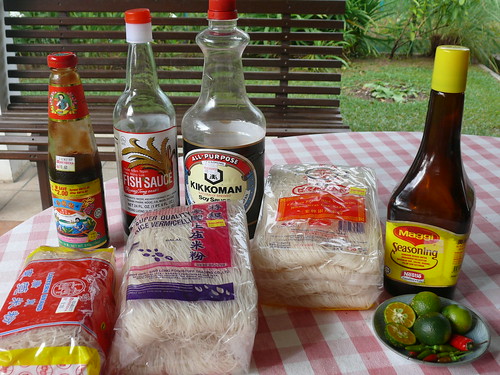
Back, L to R: Oyster sauce (the Lee Kum Kee brand with the lady rowing is the best), Thai fish sauce, Kikkoman light soy sauce
Front, L to R: Chinese mifen, Malaysian mifen, Thai mifen
Right: My favorite dip for mifen, fried fish, almost everything, is made with Maggi sauce, bird's eyes chili and calamansi limes.
The regular
mifen from China is not good for frying because it breaks up easily. However, if I cook soup
mifen, I only use the Chinese
mifen because it doesn't break up in soup (no stirring/frying) and it is more fragrant and silky. For frying, I recommend using the very thin, long
mifen from Thailand or Malaysia.
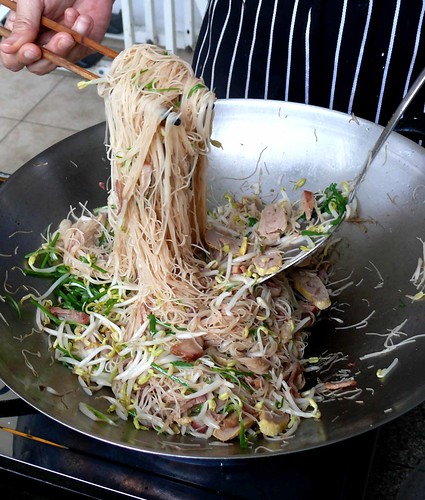
Using chopsticks won't break the noodles. This amount of
mifen in one go will not give much wok hei (heat of the wok, which gives a much-desired char flavor) so do fry in smaller batches. Restaurants fry better-tasting mi fen because they do so in small portions for one person, so that the heat of the wok is always high.
Tips on frying
mifen:
1. Never follow the instructions on the packet that tells you to soak the
mifen in hot water. What you'll end up with is a soggy mess of broken strands that'll clump if you fry them. Always soak in room temperature water till it's soft. This may take more than an hour in colder weather.
2. Try to toss the
mifen with a pair of wooden chopsticks. Using the ladle usually cuts the noodles up.
3. My mom has taught me to dilute the soy sauce and oyster sauce with water because if you add these sauces directly into the noodles, it's hard to get them to coat the noodles evenly.
4. It is better to fry
mifen in smaller batches because it'll be easier to toss/fry and also it'll taste better with more 'wok fire'. I have used very little oil but you can add more.
5.
Mifen is made of rice flour only so you must enhance the taste by adding oyster sauce or msg (restaurants use msg by the spoonfuls but you just need a couple of shakes. Nobody in China gets headaches from eating msg, as Jerry Steingarten will tell you. You only get thirsty if too much is used) on top of the soy sauce.
6. Fry in small portions to get better flavor.
I have fried tonight's
mifen 3 ways. The first is with prawns and lots of Chinese chives and bean sprouts. Beef flank, cut into thin strips would be even better than prawns.
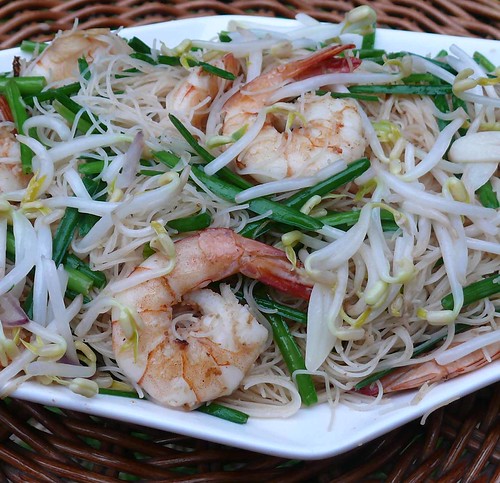 Fried Mifen With Prawns N Chives
Fried Mifen With Prawns N Chives (feeds 4 ppl)
1/2 pkt or 200g dried mifen, soaked till soft n then drained well for about 20 minutes
20 medium-sized prawns/300g beef flank strips (marinaded with salt n pepper)
2 cups bean sprouts
1 cup Chinese chives, in 2" (5cm) lengths
2 to 3 T light soy sauce (mixed with 1/3 cup water or chicken stock
2 T oyster sauce )
1/4 to 1/2 t salt (to taste), 1/4 t white pepper
1/2 bulb garlic, sliced
veg oil
1. Put 2 T oil in a wok, add the prawns/beef and fry in medium heat till 3/4 done. Now increase the heat and add the chives, beansprouts and 1/2 t salt and toss quickly for 1/2 minute. Remove. If wok is dirty, wash it.
2. Heat wok, add 3 T oil (more if you like) and the garlic and fry till fragrant but NOT brown. Add the mifen, turn heat down to medium and pour 1/4 of the sauce over, and fry using chopsticks to lift the noodles up and a frying ladle to scrap the bottom of the wok so noodles won't stick. Take a bit of noodles and taste for doneness (should be soft not hard) and taste, adding remaining sauce as you fry. Turn heat up if it's too low. Fry till all water is absorbed.
3. Add the fried meat and veg to the mifen, turn fire up, toss well for a minute or two, and dish up.
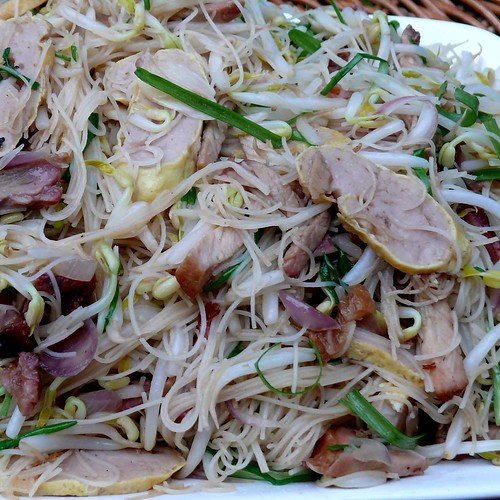 Mifen With BBQ Pork, Meat Roll N Beansprouts
Mifen With BBQ Pork, Meat Roll N Beansprouts--same as above except use BBQ pork and meat roll, cut into fine strips.
--Fry the beansprouts in a little oil and salt till half-cooked, remove. Then fry the mifen the same way as above (you can add some BBQ sauce) and add the BBQ pork, meat and sprouts last.
--Scatter some omelette strips on top as garnish (I forgot to do that).
Now the next one is sure gonna make you homesick, K! Bet you are drooling on your keyboard because there's no Sabah veg (yummy!!) anywhere but Sabah ( and sometimes in West M'sia)!
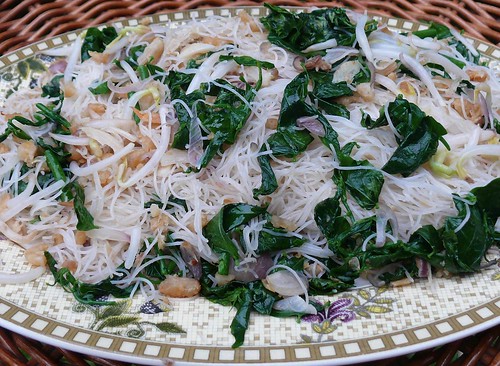 Mifen With Salted Fish, Dried Shrimps N Sabah Veg
Mifen With Salted Fish, Dried Shrimps N Sabah Veg
200g dried mifen, prepared as above
4 T dried shrimps, soaked n chopped coarsely
1 T salted fish, diced finely
2 cups Sabah veg
5 small red onions, sliced
2 T Thai fish sauce
1/3 cup water, or more
1 cup bean sprouts
1 t chili padi, cut finely
1/4 t salt n 1/4 t white pepper, 2 to 3 shakes of msg
veg oil
optional: light soy sauce (if using, reduce fish sauce)
1. Heat wok up, add 4 T oil. Now add the dried shrimps, salted fish and onions and fry till golden and fragrant. Scoop everything out but leave the oil in the wok.
2. Add another 2 T of oil to the wok, add a good pinch of salt and add the beansprouts and veg. Fry till half-done, then add the mifen. Quickly add 1/3 cup water and the fish sauce and toss well. Add the salt, pepper and msg. Keep frying till all water is absorbed. The
mifen should be dry.
3. Now add the fried shrimps/salted fish and toss well, adding more seasoning to taste. Test the doneness of the noodles, adding more water to make them softer if necessary. Add chilies last and dish up.
Note: Add a little dark soy sauce if you like a
darker
mifen.
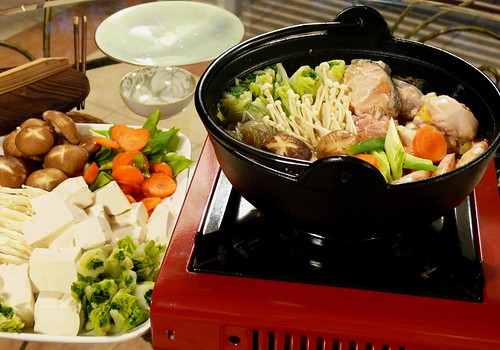

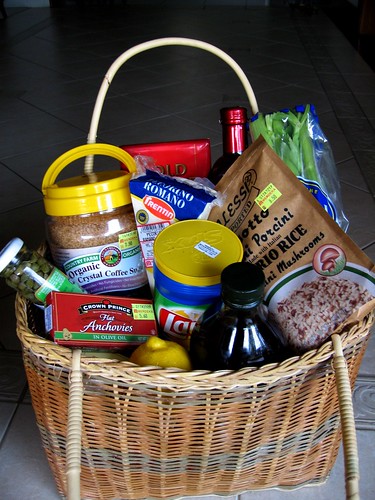

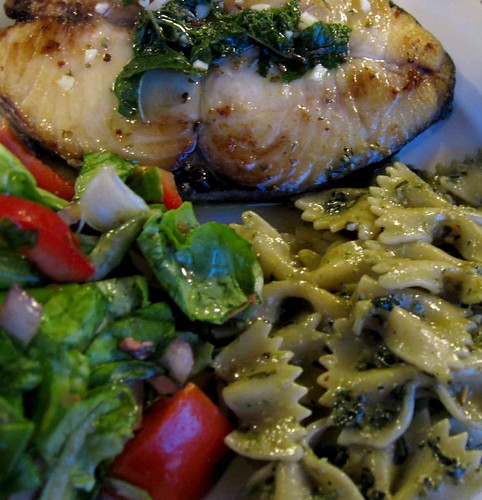
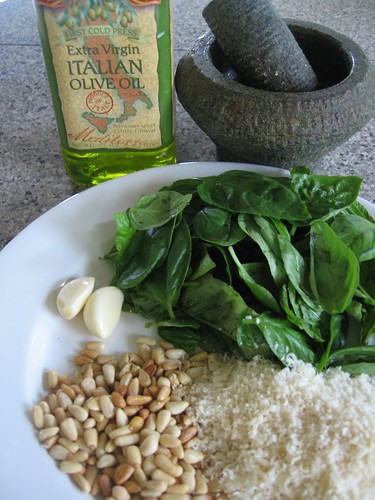
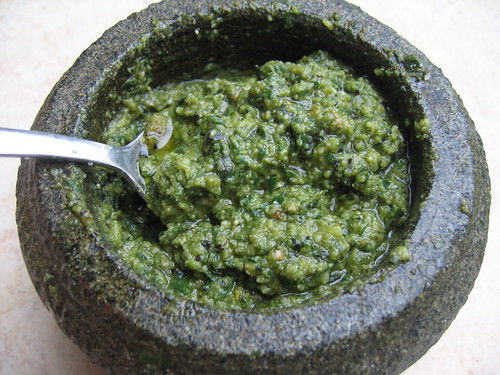

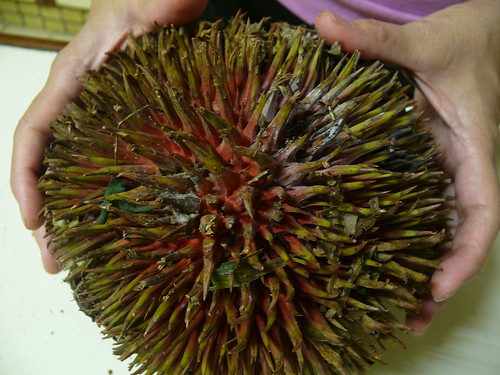
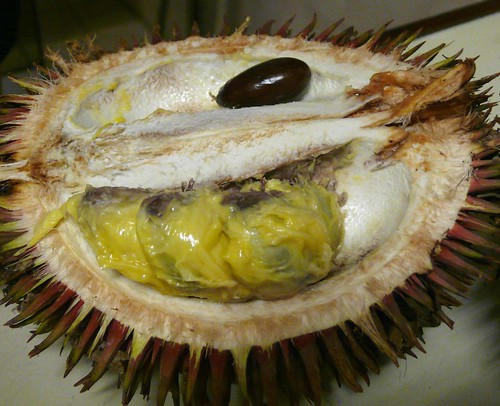


![P1060590[1]](http://farm2.static.flickr.com/1203/858143092_fb3813b5bf.jpg)





